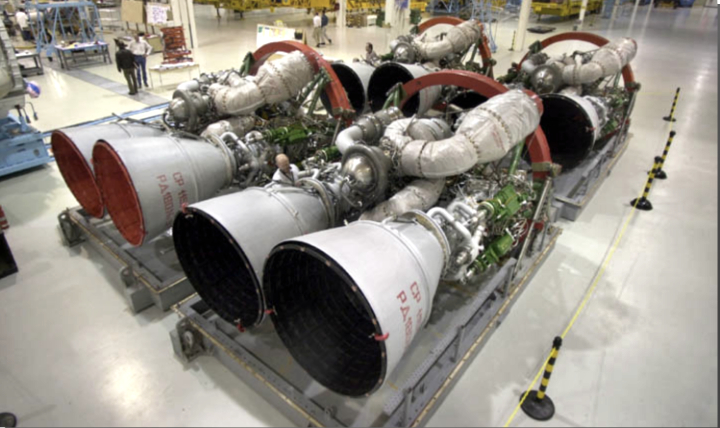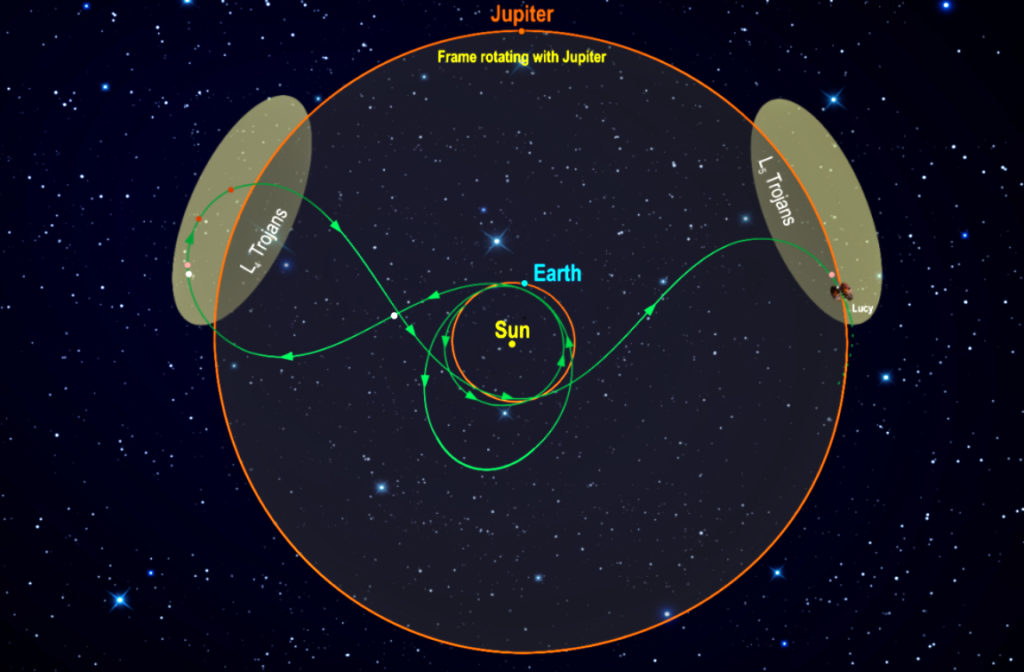
Humankind is one step closer to unlocking new knowledge about the formation of our solar system, thanks to a spacecraft named Lucy built by Lockheed Martin (NYSE: LMT). The NASA mission successfully was successfully launched from Cape Canaveral Air Force Station by United Launch Alliance at 5:34 a.m. ET on October 16, 2021.

The spacecraft was designed, built and tested in Lockheed Martin’s Littleton facility, using transformative technology. The company’s mission operations team is now in communications with the spacecraft and will operate it through the end of its mission.

The Lucy mission is a joint mission of NASA’s Goddard Spaceflight Center, the Southwest Research Institute and NASA’s Launch Services Program (LSP) based at Kennedy Space Center.


The ULA Atlas V 401 configuration rocket delivered the Lucy spacecraft into an interplanetary trajectory, which included a 14 ft. (4-m) large payload fairing (LPF). The Atlas booster was powered by the RD AMROSS RD-180 engine. Aerojet Rocketdyne provided the RL10C-1 engine for the Centaur upper stage.

This was the 89th launch of an Atlas V rocket and 21st mission launched on an Atlas V and follows the launch of Landsat 9 from Vandenberg Space Force Base last month — ULA has launched 146 times with 100 percent mission success. ULA’s next launch is STP-3 for the U.S. Space Force, planned for November 22, 2021, from Cape Canaveral Space Force Station, Florida.

Lucy will be the farthest solar-powered mission from the Sun and will visit a record-breaking number of asteroids — all in the name of studying them for clues about our own origins. Lucy’s 4-billion-mile odyssey through the solar system will last 12 years and fly by eight objects: one Main Belt asteroid and seven Trojan asteroids that lead and trail Jupiter in its orbit. Scientists are keen for an up-close look at these ancient rocks, which are believed to be pristinely preserved leftovers from the formation of our outer solar system 4 billion years ago.

These asteroids — which draw their name from a similarly epic story in Greek mythology — may contain carbon, water and other volatile compounds necessary for life and could possibly give us a glimpse into the physical environment that existed when the planets formed, as well as the conditions that fostered their formation.
Until now, scientists have only been able to study these small, primitive bodies with ground-based and Earth-orbiting telescopes. That changes with Lucy.

Key features of the Lucy spacecraft include:
- Some 430 unique components, brought together by more than 2 miles of wire, 170 square feet of composite structure and more than 12,800 electrical connections
- Three powerful, primary instruments to study the geology, composition and structure of the Trojan asteroids
- Two 24-foot diameter solar arrays built by Northrop Grumman, spanning more than a four-story building when unfurled
- A robust thermal design that protects Lucy from extreme space temperatures ranging from -250⁰F to +300⁰F
- Autonomous software that enables Lucy to track asteroid targets as it flies by at an average speed of 15,000 mph
- Advanced production parts like 3D-printed brackets and harness clamps, made from three different materials
The team also made use of the latest collaborative tools and digital engineering techniques on Lucy, including automated testing, digital test review capability and remote collaboration. These tactics helped the team continue production without missing a shift throughout the pandemic.
The spacecraft carries updated versions of three heritage instruments…
- L’Ralph, NASA Goddard Space Flight Center – This camera is capable of taking images of the Trojan asteroids on the visible and infrared spectrums. Its images will help scientists determine what the Trojans’ surfaces are made of as they look for the presence of things like ice, hydrated minerals and other organic materials.
- L’LORRI (Long Range Reconnaissance Imager), Johns Hopkins Applied Physics Laboratory – Functioning like the Hubble Space Telescope, this telescopic camera will take black and white images of the Trojans from afar and produce incredibly detailed, high resolution visuals of things like craters on their surfaces — even though the asteroids are not illuminated by any light source. If you were standing on one end of a football field, you’d be able to see a fly on the other end of the field with L’LORRI.Thanks to its ability to look across large distances, L’LORRI will also help Lucy orient itself and navigate through space.
- L’TES (Thermal Emission Spectrometer), Arizona State University –Think of this as the world’s most sophisticated thermometer. It will measure the infrared energy emitted by the asteroids as the sun warms them and detect unique spectral signatures of individual minerals and other surface properties.
Lucy builds on years of technology from numerous Lockheed Martin planetary missions, such as Mars Odyssey, OSIRIS-REx and InSight, among others.
“Seeing Lucy start her journey reinforces the strength of the 500 team members from NASA, Lockheed Martin, the Southwest Research Institute and many other teams who worked together to bring this mission to life,” said Rich Lipe, Lockheed Martin Lucy program manager. “It’s a tale centered on flexibility, collaboration and ingenuity, which is fitting for the voyage that lies ahead for this advanced spacecraft.”
“We are honored to partner with NASA to launch this one-of-a-kind mission and are proud to add the Lucy mission to the Trojan Asteroids to our list of exploration launch successes,” said Gary Wentz, ULA vice president of Government and Commercial Programs. “We are very proud to launch this spacecraft on its historic 12-year journey to eight different asteroids, and thank our mission partners for their teamwork.”
More About the Mission
Lockheed Martin Space designed, built, tested and operates Lucy out of its Littleton, Colorado, facility. NASA’s Goddard Space Flight Center in Greenbelt, Maryland, provides overall mission management, systems engineering and safety and mission assurance. The Boulder, Colorado branch of Southwest Research Institute, headquartered in San Antonio, TX, is the principal investigator institution. Instruments were contributed by NASA Goddard, Arizona State University and Johns Hopkins Applied Physics Laboratory. Marshall Space Flight Center in Huntsville, Alabama, manages the Discovery Program for the agency’s Science Mission Directorate in Washington, D.C.

